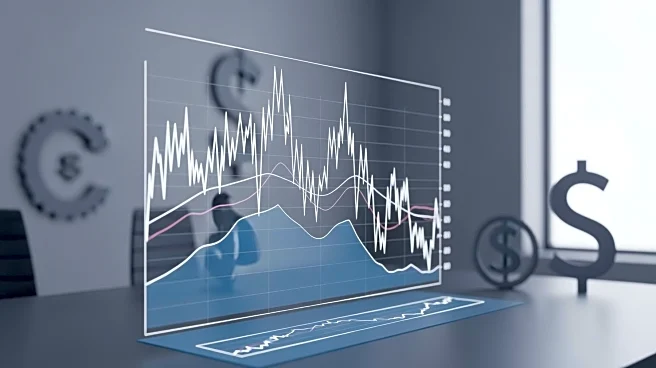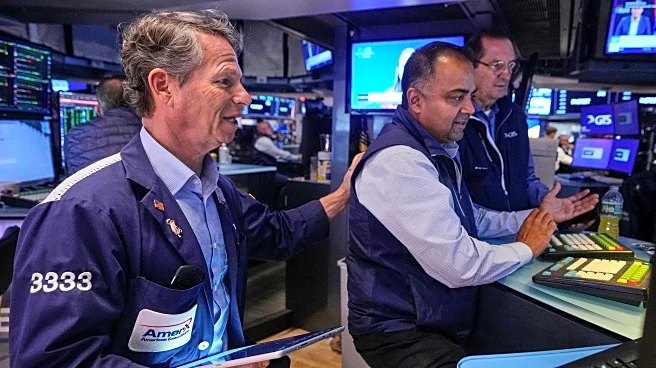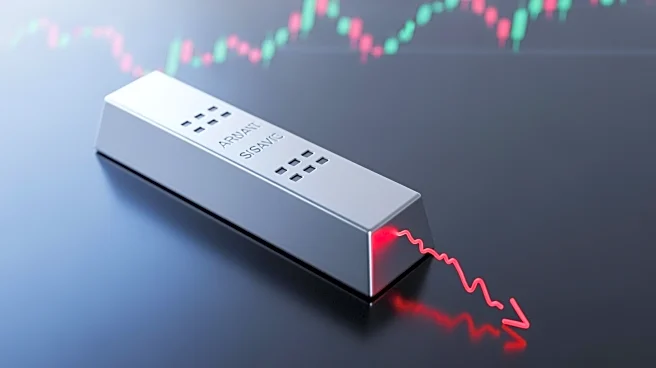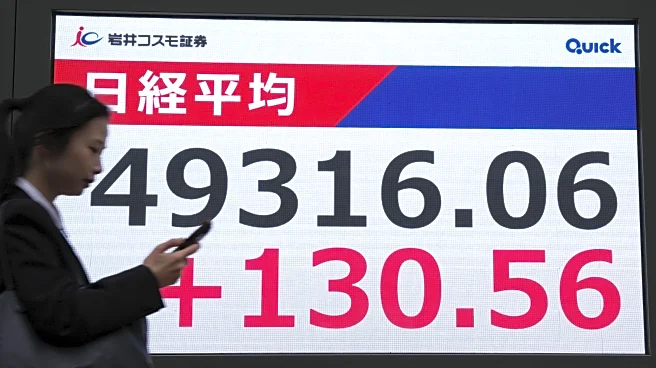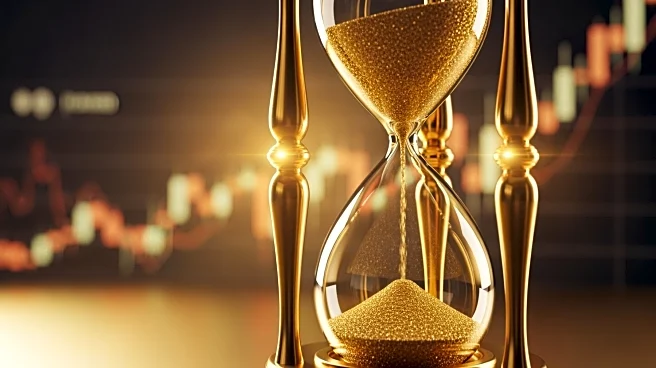What's Happening?
Gold prices experienced a decline of 2% on Tuesday following a record high in the previous session. This drop is attributed to profit-taking by investors who had driven the metal's price up due to expectations
of U.S. interest rate cuts and strong safe-haven demand. Spot gold was priced at $4,264.91 per ounce, down from its all-time high of $4,381.21. U.S. gold futures for December delivery also fell by 1.9% to $4,278.50 per ounce. The dollar index rose by 0.3%, making gold more expensive for holders of other currencies. The market is now turning its attention to the upcoming U.S. consumer price index (CPI) data, which is expected to show a 3.1% year-over-year increase for September. This data could reinforce expectations for the Federal Reserve to lower interest rates by 25 basis points at its next meeting.
Why It's Important?
The fluctuation in gold prices is significant as it reflects broader economic and geopolitical uncertainties. Gold, being a non-yielding asset, tends to benefit from a low-interest-rate environment, which is anticipated due to potential Federal Reserve actions. The expected interest rate cuts are likely to influence investment strategies, with many market participants considering exposure to gold if prices experience setbacks. Additionally, the CPI data will be crucial in shaping market expectations regarding U.S. monetary policy. The outcome could impact various sectors, including commodities and equities, as investors adjust their portfolios in response to potential changes in interest rates.
What's Next?
Investors are closely monitoring the release of the U.S. CPI data scheduled for Friday, which will provide insights into inflation trends and influence Federal Reserve policy decisions. Should the data confirm expectations of a 3.1% increase, it may prompt the Federal Reserve to proceed with interest rate cuts, affecting gold prices and broader market dynamics. Market participants who have not yet engaged in the gold rally may seek opportunities to invest if prices experience further declines. Additionally, geopolitical developments, such as easing trade tensions between the U.S. and China, could also play a role in shaping market sentiment and influencing commodity prices.
Beyond the Headlines
The recent movements in gold prices highlight the complex interplay between economic indicators and investor behavior. The anticipation of interest rate cuts underscores the ongoing challenges faced by central banks in balancing inflation control with economic growth. Furthermore, the increased silver flows from the U.S. and China to London's spot market indicate a shift in liquidity dynamics within the precious metals sector. These developments may have long-term implications for global trade and investment strategies, as stakeholders navigate the evolving economic landscape.





